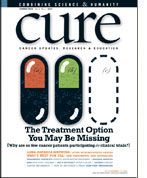Publication
Article
CURE
A Lasting Effect on Breast Cancer Prevention
Author(s):
Updates results from the STAR trial show Evista and tamoxifen have long-term breast cancer prevention effects.
Updated results from the STAR P-2 trial, which compared the long-term effect of tamoxifen to Evista (raloxifene) in nearly 20,000 postmenopausal women, confirmed that both drugs significantly reduce the risk of breast cancer. However, tamoxifen had a more lasting effect but higher risk of side effects.
Initial results from the trial, announced in 2006, found that both Evista and tamoxifen lowered the risk of invasive cancer equally, by about half after four years of follow-up. Evista, however, had fewer side effects, including uterine cancer and blood clots. Initially approved to prevent and treat osteoporosis, Evista was later approved for breast cancer prevention in 2007.
Announced at the American Association for Cancer Research annual meeting in April, the latest results demonstrated that while the efficacy of Evista dipped slightly compared to tamoxifen once women stopped taking the drug, it is still a viable option for postmenopausal women at high risk for breast cancer, as is tamoxifen. At a median follow-up of seven years, it was estimated that Evista lowered the risk by 38 percent, while tamoxifen continued to decrease the risk by half.
Both drugs are relatively inexpensive with modest side effects, but only about 5 to 20 percent of high-risk women use them to reduce their risk of breast cancer, said Gabriel Hortobagyi, MD, chair of breast medical oncology at M.D. Anderson Cancer Center in Houston, at a press briefing during the meeting. Experts hope that because women and their physicians are familiar with Evista, it may be a more palatable option because a large population has been using it long-term for osteoporosis management.





